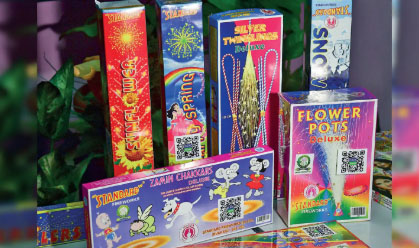With Diwali just around the corner, the Supreme Court of India has signaled a possible relaxation of the long‐standing ban on firecrackers in Delhi-NCR—by allowing green crackers on a trial basis for this festive season
Table of Contents
ToggleThe ban and earlier rulings
Since 2018, in the landmark Arjun Gopal vs Union of India judgment, the Supreme Court had imposed stringent restrictions on firecrackers in the National Capital Region, directing that only reduced-emission and green variants that meet noise and emission standards could be manufactured and sold, and banning online sales and unlicensed trade.
In more recent years, governments and courts had maintained or extended restrictions, citing the severe air quality problems during Diwali and surrounding festivals.
What the Supreme Court suggested this week
During hearings on pleas by firecracker manufacturers, the Supreme Court bench led by Chief Justice B. R. Gavai and Justice K. Vinod Chandran indicated that it might permit the use and sale of green crackers in Delhi-NCR for five days around Diwali—strictly on a trial basis and with tight regulatory conditions.
The permission, if granted, would be limited to the Diwali days under review, to assess its impact.
Proposed hours include 8 pm to 10 pm for Diwali celebrations. For other occasions like New Year’s Eve or Gurpurab, narrower windows may apply
Only green crackers certified by NEERI (National Environmental Engineering Research Institute) and PESO (Petroleum & Explosives Safety Organisation) would be allowed to be manufactured, sold, and used.
Sales would be restricted to licensed dealers; online sales (via Flipkart, Amazon, etc.) would remain prohibited in the NCR region.
The court suggested that random sampling and surprise inspections be deployed to detect “fake green crackers” or non-compliance.
The court noted that PESO currently lacks its own chemical testing lab in NCR, relying on external analysis. It directed efforts to bolster testing capacity
One bench observation stood out: an absolute ban, the court said, is “neither practical nor ideal,” especially when enforcement gaps often lead to violations even under blanket prohibitions
Arguments For and Against the Move Supportive arguments:
Many citizens and state governments have petitioned for relief so that festival celebrations can be more meaningful, especially for children.
Firecracker manufacturing supports many workers and small businesses, which have faced hard times under stricter bans.
Green crackers are claimed to emit lower particulate matter (often 20-30 % less) compared to traditional ones.
Concerns and critiques
Effectiveness doubts: Experts point out that even in prior years, allowing “less polluting” crackers had little measurable impact on overall air quality.
Fake green crackers: The risk of non-compliant or mislabeled products entering the market is a real challenge
Cumulative pollution surges: Even limited bursting may cause temporary spikes in pollutant levels, compounding with other pollution sources such as vehicular emissions and crop burning.
Monitoring & enforcement capacity: The current infrastructure may struggle to enforce the rules effectively—especially in chaotic market conditions.
The Supreme Court has reserved its final order, giving space for more submissions and deliberation.
The decision over allowing green crackers this Diwali will likely hinge on assessing the balance between environmental protection and festivity rights.
Whether allowed or disallowed, the Supreme Court’s hint at a middle path signals a recognition that strict prohibitions may not suffice — and that creative regulation might be the way forward in managing India’s festivity-pollution dilemma.
